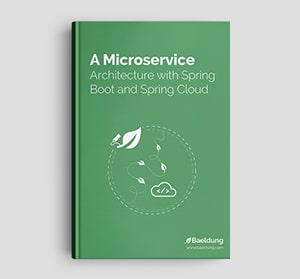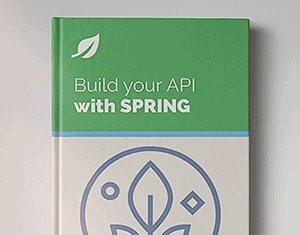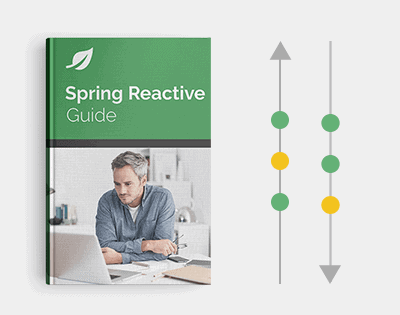Course – Black Friday 2025 – NPI EA (cat= Baeldung)
Yes, we're now running our Black Friday Sale. All Access and Pro
are 33% off until 2nd December,
2025:
>>
EXPLORE ACCESS NOW
Partner – Orkes – NPI EA (cat=Spring)
Modern software architecture is often broken. Slow delivery
leads to missed opportunities, innovation is stalled due to
architectural complexities, and engineering resources are
exceedingly expensive.
Orkes is the leading workflow orchestration platform
built to enable teams to transform the way they develop, connect,
and deploy applications, microservices, AI agents, and more.
With Orkes Conductor managed through Orkes Cloud, developers can
focus on building mission critical applications without worrying
about infrastructure maintenance to meet goals and, simply put,
taking new products live faster and reducing total cost of
ownership.
Try a 14-Day Free
Trial of Orkes Conductor today.
Partner – Orkes – NPI EA (tag=Microservices)
Modern software architecture is often broken. Slow delivery
leads to missed opportunities, innovation is stalled due to
architectural complexities, and engineering resources are
exceedingly expensive.
Orkes is the leading workflow orchestration platform
built to enable teams to transform the way they develop, connect,
and deploy applications, microservices, AI agents, and more.
With Orkes Conductor managed through Orkes Cloud, developers can
focus on building mission critical applications without worrying
about infrastructure maintenance to meet goals and, simply put,
taking new products live faster and reducing total cost of
ownership.
Try a 14-Day
Free Trial of Orkes Conductor today.
eBook – Guide Spring Cloud – NPI EA (cat=Spring Cloud) eBook – Mockito – NPI EA (tag = Mockito)
Mocking is an essential part of unit testing, and the Mockito
library makes it easy to write clean and intuitive unit
tests for your Java code.
Get started with mocking and improve your application tests
using our Mockito guide:
Download the
eBook
eBook – Java Concurrency – NPI EA (cat=Java Concurrency)
Handling concurrency in an application can be a tricky process
with many potential pitfalls. A solid grasp of the
fundamentals will go a long way to help minimize these issues.
Get started with understanding multi-threaded applications with
our Java Concurrency guide:
>>
Download the eBook
eBook – Reactive – NPI EA (cat=Reactive)
Spring 5 added support for reactive programming with the Spring
WebFlux module, which has been improved upon ever since. Get
started with the Reactor project basics and reactive programming
in Spring Boot:
>> Join Pro and
download the eBook
eBook – Java Streams – NPI EA (cat=Java Streams)
Since its introduction in Java 8, the Stream API has become a
staple of Java development. The basic operations like iterating,
filtering, mapping sequences of elements are deceptively simple to
use.
But these can also be overused and fall into some common
pitfalls.
To get a better understanding on how Streams work and how
to combine them with other language features, check out our guide
to Java Streams:
>> Join Pro
and download the eBook
eBook – Jackson – NPI EA (cat=Jackson) eBook – HTTP Client – NPI EA (cat=Http Client-Side) eBook – Maven – NPI EA (cat = Maven) eBook – Persistence – NPI EA (cat=Persistence) eBook – RwS – NPI EA (cat=Spring MVC) Course – LS – NPI EA (cat=Jackson)
Get started with Spring and Spring Boot, through the Learn
Spring course:
>> LEARN
SPRING Course – RWSB – NPI EA (cat=REST) Course – LSS – NPI EA (cat=Spring Security)
Yes, Spring Security can be complex, from the more advanced
functionality within the Core to the deep OAuth support in the
framework.
I built the security material as two full courses - Core and
OAuth, to get practical with these more complex scenarios. We
explore when and how to use each feature and code through it on
the backing project.
You can explore the course here:
>> Learn Spring
Security
Partner – Orkes – NPI EA (cat=Java)
Modern software architecture is often broken. Slow delivery
leads to missed opportunities, innovation is stalled due to
architectural complexities, and engineering resources are
exceedingly expensive.
Orkes is the leading workflow orchestration platform
built to enable teams to transform the way they develop, connect,
and deploy applications, microservices, AI agents, and more.
With Orkes Conductor managed through Orkes Cloud, developers can
focus on building mission critical applications without worrying
about infrastructure maintenance to meet goals and, simply put,
taking new products live faster and reducing total cost of
ownership.
Try a 14-Day
Free Trial of Orkes Conductor today.
Course – LSD – NPI EA (tag=Spring Data JPA)
Spring Data JPA is a great way to handle the complexity of
JPA with the powerful simplicity of Spring Boot.
Get started with Spring Data JPA through the guided reference
course:
>> CHECK OUT THE
COURSE
Partner – Moderne – NPI EA (cat=Spring Boot)
Refactor Java code safely — and automatically — with
OpenRewrite.
Refactoring big codebases by hand is slow, risky, and easy to
put off. That’s where OpenRewrite comes in. The open-source
framework for large-scale, automated code transformations helps
teams modernize safely and consistently.
Each month, the creators and maintainers of OpenRewrite at
Moderne run live, hands-on training sessions — one for newcomers
and one for experienced users. You’ll see how recipes work, how to
apply them across projects, and how to modernize code with
confidence.
Join the next session,
bring your questions, and learn how to automate the kind of work
that usually eats your sprint time.
Course – Black Friday 2025 – NPI (cat=Baeldung)
Yes, we're now running our Black Friday Sale. All Access and Pro
are 33% off until 2nd December,
2025:
>> EXPLORE
ACCESS NOW
Here we go…
1. Spring and Java
Java 13 was released this week — see what’s new or changed in the language itself, plus a few API improvements and new JVM features.
A nice addition in release 2.7.0 of the hibernate-types project.
And whether you’re new to the Bean Validation standard or a seasoned veteran, you’ll surely find at least a couple of takeaways here.
Also worth reading:
Webinars and presentations:
Time to upgrade:
2. Technical and Musing
An exciting new series examines best practices for improving the efficiency of enterprise testing, for a variety of test scopes and approaches.
And a good write-up proposing that certain kinds of code quality misses could be the result of a developer’s motivation to meet their basic needs rather than laziness or lack of skill.
Also worth reading:
3. Comics
4. Pick of the Week
One week left to vote in the annual “State of Java” Survey.
As always, I’m keeping the survey quick and focused – it takes literally under 1 minute to fill in.
If you haven’t done that, definitely have a look:
Of course, I’ll share the full results after closing the survey. Thanks.
One more to 300. Maybe I’ll sneak a “This is Sparta!” in there 🙂


















